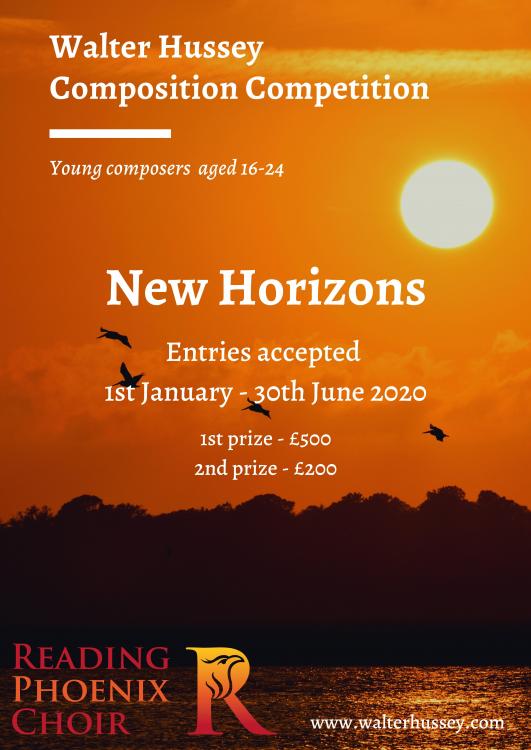Search the Community
Showing results for tags 'satb'.
-
Today perhaps more commonly known by the title "Down to the River to Pray," this traditional African American spiritual was first published as "The Good Old Way" in 1867, two years after the end of the Civil War, and is believed to originate from the Tennessee, Arkansas, Mississippi area. A variation of the tune was popularized by the movie 'O Brother, Where Art Thou?' I wanted to familiarize people with the older version of the melody, since all the arrangements I have seen in recent years use the 'O Brother' version. As the text in the earliest published copies is very sketchily presented and 100% repetitive if taken at face value, (after the first verse, it just says, "Sister, etc." I took the liberty of modifying it slightly to add a little variety and sense of storytelling as well as harmonizing the different verses in different ways. The melody which begins at rehearsal mark C was whistled by Dick, last name unrecorded, a black pole-man on the steamboat Marion on the Ocklawaha River route in May of 1875, as transcribed in the book "Florida: Its Scenery, Climate, and History." I loved the idea of adding another musical source that would be completely novel to all but the music historians, and that in all probability the melody is Dick's own composition. There is just enough information about him that it is possible that someone researching family history may recognize him as their ancestor and add more detail to the story. I'd love to hear your thoughts! As I went down in the valley to pray, studyin' about that heav'nly day, when you shall wear the starry crown, Good Lord, show me the way. Oh, mourners, let's go down, let's go down, let's go down, Oh, mourners, let's go down, down in the valley to pray. As I went down in the valley to pray, studying' about that good old way, and who shall wear the wings and crown, Good Lord, show me the way. Oh, sisters, let's go down, hand in hand, let's go down, Oh, sisters, let's go down, down in the valley to pray. As I went down in the valley to pray, studying' about that good old way! And would you wear His robe and crown? Good Lord, show me the way. Oh, brothers, let's go down, let's go down, let's go down, Oh, brothers, let's go down, down in the valley to pray. Down, down, Oh let's go down, Good Lord, show me the way... As I went down, down to the valley, green swaying' trees, show me the way. As I went down in the valley to pray, studyin' about that good old way, and you shall wear that starry crown, Good Lord, show me the way. Oh, sinners, let's go down, let's go down, let's go down, Oh, sinners, let's go down, down in the valley to pray!
- 2 replies
-
- 1
-

-
- traditional
- down to the river to pray
-
(and 3 more)
Tagged with:
-
SATB, a cappella. This would work for a church service or a more secular event. For all the empty desks and voices missing from playgrounds across the United States. All the little angels rise. See how they rise? All the little angels rise. Tell me how they rise. They rise up to heaven with their rain boots on, puddle stompin’ then they’re gone. All the little angels rise. See how they rise? All the little angels rise. See how they rise? All the little angels rise. Tell me how they rise. They rise up to heaven a-playin' drums: pots and pans and kitchen tongs. All the little angels rise. See how they rise? All the little angels rise. See how they rise? All the little angels rise. Tell me how they rise. They rise up to heaven with their jammies on, rosy toes and then they’re gone. All the little angels rise. See how they rise?
- 5 replies
-
- gun violence
- school shootings
- (and 6 more)
-
Since Covid made singing in groups so unsafe, choirs have taken a real hit to their membership, and many are still smaller than they were before the pandemic. I wrote this piece to be performable by a small group. The range of the baritone part should be manageable by either tenors or basses, since they are generally the smallest sections in a choir, to help with balance issues. The baritone part does divide a bit for the sake of interest and to give any bass 2s a break from their high range, but as the piano and other parts are generally covering those splits, they can be done away with if a group only has a single male voice, or a conductor chooses to put all their tenors and basses on a single line to improve balance against larger soprano and alto sections. The ranges of the soprano and alto parts are also moderate enough that an alto 1 could sing soprano or a soprano 2 could sing alto in the case of unbalanced sections. I've mainly limited dynamics to mp and mf, since smaller groups are more likely to have blending and balance issues at very loud dynamics or sound timid at softer ones. I'd love to know your thoughts, particularly pianists! (I'm not a pianist). Does anything seem particularly awkward, or should be written for the other hand? Would the thorny accidentals at measure 63-64 be easier to sight-read at speed if I used the Cb and Bbb enharmonic equivalents, so those righthand notes were in paired thirds going up and down the scale? Thank you for your thoughts! Revelation 21 KJV 1 And I saw a new heaven and a new earth: for the first heaven and the first earth were passed away; and there was no more sea. 4 And God shall wipe away all tears from their eyes; and there shall be no more death, neither sorrow, nor crying, neither shall there be any more pain: for the former things are passed away. 5 And he that sat upon the throne said, Behold, I make all things new. And he said unto me, Write: for these words are true and faithful.
- 5 replies
-
- 1
-

-
- revelation 21:1-5
- environmental destruction
-
(and 7 more)
Tagged with:
-
Moderate difficulty and modest ranges for all vocal parts. There are a few notes of divisi for every part but the tenors. I'd love to hear what you think, and pianists, let me know if the piano reduction would be better with any notes moved to the other hand. (I'm not a pianist). Thanks for your thoughts! The text follows the lifecycle of the bumble bee. Unlike domesticated honey bees, out of the whole colony, only new bumble bee queens survive the winter each year. Each new pregnant queen must carefully select a nest site after emerging for winter dormancy and start a colony all alone. For the first few weeks of spring, she must divide her time between laying eggs, gathering and preparing nectar and pollen, and warming and caring for her new offspring. If her nest site proves to be too far from a continual succession of blooms while the weather is still cool, her babies will succumb to the cold while she is away from the nest gathering food for them. Until the first generation of workers are old enough to take over some of the tasks of caring for the group, allowing for grocery trips further from home, and warm temperatures and the flood of summer flowers makes comfort and food supplies more sure, her nest's survival is tenuous. But if all goes well, by the time summer wanes, hundreds of her children will be busy among the blooms, and her own new queens will be preparing to disperse and carry on the cycle the next year. It's also important to remember that although we may see hundreds of bumble bees out in the garden, genetically speaking, each nest counts as one individual. One reproducing queen: one set of genes being passed down. All those workers don't generally count. So when you are thinking about the survival of a bumble bee species, you need not just lots of bumble bees, but lots of bumble bee nests in an area in order to have the genetic diversity that allows the population to continue in a healthy way. Too few nests, each headed by a single reproducing queen, and even though you see tons of bees on the landscape, they may be in danger of slow local extinction from inbreeding. You can help! A mowed lawn, a sea of mulched flower bed, or a paved parking area is not bee habitat. None of these provide nesting sites or food. Bumble bees need drifts of fallen leaves to hide their nests under in summer, and for the queens to pass the winter under. So don't rake at least part of your yard, or compost your leaves in a big pile on site. Thick clumps of long grasses are also popular nesting sites. If you could hide a rabbit in it, it's probably thick and clumpy enough. Cohabitating with chipmunks in their holes is also popular, so tolerate those cute little guys in your yard. And be sure to have plenty of native flowering plants in your yard. Our local bees evolved with our local plants. Often plants from other continents don't have the right flower shape for them to access, bloom at the wrong time, or don't provide the right nutrition they need to thrive. Humans mess around with breeding flowers for color and size so much, that often we end up breeding flowers that actually contain no nectar or pollen. Oops! No food there at all!
- 7 replies
-
- 1
-

-
- a cappella
- flowers
-
(and 6 more)
Tagged with:
-
Firstly, it has been awhile. I have to say I've missed the companionship, the camaraderie this site offered, and I've thought of many of you often over the past couple of years. So many times my hand has lingered over the ENTER key after I'd typed in this website's address — only to close my browser with a sad sigh. I can't tell you why because I don't understand it myself. Poignant memories of better days, perhaps? I can say these past 2 years have been difficult for me (and loads of others, I'm sure). The pandemic, the lockdown, the isolation... it took a pretty heavy toll on my mental health. My muse has been utterly silent. Utterly silent. Not a single note written or even hummed. I began to wonder if my days as a composer had ended for good. Thankfully — as you obviously guessed — that turned out not to be the case, and I finally broke my composing fast with this choral piece of a poem by Tolkien. I can slowly feel the music begin to stir inside me once more. Anyway, enough about my sad, sorry life. I hope this piece brightens your day and lifts your spirits. I'm rusty and out of practice, but I cannot tell you how good it feels to stretch these old composing muscles again! The recording is a bit pitchy in places (I had to perform all of the parts myself); hopefully it won't damage your listening experience too much. Thank you all in advance for your time. If you have questions about the harmonies and scales employed here, all you need do is ask. (In fact, I don't even care if you listen. Just a comment from you telling me how life's been over the past 2 years would be simply amazing!) Ah, it feels good to be back, guys! Very good, indeed.
-
Hi all, Any comments would be greatly appreciated, particularly on the piano part as I'm not a pianist. I wanted to write something that would give the pianist a chance to shine, but also am aware that pay for professional accompanists is low for all that they do, and that it just isn't possible to ask them to spend hours practicing a single three-minute piece for a single concert if they are going to make a living. If thinning down some of the fast chords would be a good idea for the sake of practicality, pianists, let me know. I don't want to go any slower than this tempo; the choir would risk running out of air. There is a lot of beautiful, slow music for choirs, so fun, fast pieces are always in demand to balance out a concert program. The text describes the mating dance of a cloud of solitary wasps, observed by American husband and wife entomology team Phil and Nellie Rau near St. Louis in the early 1900s. "The whole was not a helter-skelter commotion, but a merry whirl to the music of a faint, eerie hum of many wings, with every few moments a rather musical crescendo, which sounded like “zip!”, when a whirling pair would suddenly dash off at triple speed on the wing, in the final fling of joyful abandon..." - from"Wasp Studies Afield," published 1918. Furtak-Sun Dancing.pdf
-
This is a piece I wrote for a competition in my area. I entered it in the vocal ensemble category, here is the description I had to write for my submission: "The poem which was used as the text for this piece deals with themes of heaviness and despair. While the music is written in the major, a mode some would consider to have connotations of lightness, it is here used to convey a sense of hopeful melancholy. The poem speaks of a weight associated with winter, and of a despair and questioning of existence. Due to this, it could be that Emily Dickinson was describing a kind of seasonal depression, a heaviness that’s associated with winter and is easier to bring to mind when your surroundings suggest it. Another reading is that she is speaking on the inevitability of death, and how that sense of despair is an unavoidable part of the human experience." Please let me know what you think of it, feedback is extremely valuable to me and I really like hearing other peoples thoughts on my music. There's a certain Slant of light.mp3
- 2 replies
-
- feedback wanted
- competition
-
(and 2 more)
Tagged with:
-
Here's one of the first choral pieces I've ever completed. Feedback would be great, thanks.
- 7 replies
-
- 4 part writing
- latin
-
(and 4 more)
Tagged with:
-
Hey, I have written some hymns and I have been trying to get them transcribed to sheet music in a Bach Chorlaes (SATB) style format. Here is a rough draft of the score and a midi file, if anyone can help, please send me a message in the chat. Lord Touch My Eyes.mid
-
- piano
- bach chorales
-
(and 1 more)
Tagged with:
-
10 My beloved spake, and said unto me, Rise up, my love, my fair one, and come away. 11 For, lo, the winter is past, the rain is over and gone; 12 The flowers appear on the earth; the time of the singing of birds is come, and the voice of the turtle is heard in our land; 13 The fig tree putteth forth her green figs, and the vines with the tender grape give a good smell. Arise, my love, my fair one, and come away.
-
Some info about this piece: It’s based off of the poem by Paul Laurence Dunbar titled ‘Invitation To Love’. Unfortunately because of the program I use the performers in the audio file don’t sing the lyrics (words to the poem). This is the first piece of music I’ve written for a vocalist. Typically I only do instrumentalists and I didn’t know a lot at all about vocalists when I wrote this. I am essentially teaching myself, so if anyone has advice for writing for vocalists please help me out! Hope you enjoy!
-
Thanks for your thoughts! On a night of roses, stars bloom overhead. Miles ago and years away, a furnace burst into flame. The fox-bright black births a new point, smaller than a thought, a whisper of light. The universe is breathing, and we, heady moths, drunk on the scent, In and out, in and out.
-
The text is the Spanish language version of the quote that starts Toni Morrison's "Beloved." Since she died this August, I was thinking about her books. Llamaré al que no era mi pueblo, pueblo mío; y a la no amada, amada. I will call the one who was not my people, my people; and the unloved, beloved.
- 6 replies
-
- biblical text
- spanish
-
(and 2 more)
Tagged with:
-
Happy New Year everybody, Today is the first day of submissions for the Walter Hussey Composition Competition (with entries closing on June 30th). The competition is free to enter, and this year is only open to composers aged 16-24 on June 30th 2020. There are two cash prizes available for the winning entrants, and the work will be premiered by Reading Phoenix Choir in March 2021. For full details, visit www.walterhussey.com but in brief: - The theme is New Horizons - SATB to SSAATTBB plus solo lines if you want - Ideally unaccompanied - Ideally <3 minutes (the choir sing everything from memory) - Entry is by submitting a pdf and accompanying audio file (anything from rubbish midi to a multitrack MP3 will do) to info@walterhussey.com - Maximum two entries per person Hopefully lots of you will decide to enter!
-
It may be November, but church musicians have been thinking about Christmas music for months! Ho-ho-ho!
- 2 replies
-
- quartet
- arrangement
-
(and 5 more)
Tagged with:
-
I'd love to hear any thoughts you have about this piece, particularly about the clarity of the piano reduction. Ideally this would be performed a cappella, but it's nice to have a piano reduction for rehearsal or in case the singers need some support. There is some part crossing between the sopranos and altos. It doesn't go out of range for anyone and I liked the way the lines flowed for each part better this way. Any enharmonics you would mark differently? Psalm 133: 1 Behold, how good and how pleasant it is for brethren to dwell together in unity! Thanks for taking the time to listen! Here's a youtube demo video with the score rolling by:
- 7 replies
-
- a cappella
- contemporary
-
(and 4 more)
Tagged with:
-
Hi! I'm definitely too old to be called a "young composer", but I am a bit late to the party! This is my first piece, although it has been re-drafted MANY times. Have a look/ listen, and please give me some honest feedback..but please don't be brutal :-) I'm new to all this, but really enjoy composing, and hoping that one day i'll make a decent job of it :-) I'm not a pianist (as you probably can tell from the piano part...) so any tips/ hints for this would be fab. As would be any other feedback/ suggestions/ constructive comments, (and of course anything you think works well) is really really appreciated. Cheers!
-
I was wondering if someone could give some tips on what instruments to boost the bass range of an orchestra, currently I am using EWQLSO and am somewhat limited on the range of certain instruments. Also wondering if they could direct me towards which instruments play which clefs in soprano, alto, tenor, bass.
- 4 replies
-
- question
- arrangement
-
(and 8 more)
Tagged with:
-
So I cannot sleep and I composed this Agus Dei. Not gonna be perfect and will continue working on it. Attached are the audio and pdf score file
-
Anyone have a minute to pick at my piece? Thoughts on the piano part are particularly welcome since I'm not a pianist. Thanks! Who can ascend the hill of the Lord? and who can stand in His holy place? Those who have clean hands, and a pure heart;
-
This is an ode to family and home in uncertain times. The tracing of many loved feet over the same path in the yard is a visible, physical reassurance that everyone is safe and accounted for in an age when many people can't count themselves so lucky. We start out with each voice part in a different phrygian mode, gather ourselves together into A minor, and only at the very end shift definitely to a more certain sounding and strong C major. The piano part isn't very pianistic, but it provides sort of a bell tolling to keep the pitch true at the beginning, and then a continuous heartbeat as a reminder of exactly what is at stake when you love another person. As long as the heart beats we live in the knowledge that some day it will stop. I tucked one hidden line in, just for the basses. Everyone says, "I love the little path your feet have made between the door and shed. It says you were here, and here you'll stay. And the grass loves summer light too much to mind a little wear." And the basses say, "Warm grass loves summer light as I love you." Caring for other people wears us away like footsteps ruin the lawn, and that's what makes us love them. They change us. The heat of summer turns the grass brown and brittle and it sings with a thousand summer songs and smells like home. If you have any input, I'd love to hear it. Particularly on the section with the 3/4 and 2/4 bars. I know I like the way the rhythms sit there, but I'm not sure if I expressed them in the easiest way for the conductor. I tried conducting my way through it and this was the best I could do to get the stressed beats of the text to line up with the strong beats of the measure, but maybe some of the 2/4s should be 4/4?
- 11 replies
-
- phrygian
- piano accompaniment
-
(and 2 more)
Tagged with:
-
Hi all! Home Economics doesn't exist anymore and The Food Network makes it look like you can't fry an egg without granite countertops, truffle oil, and a degree from culinary school. I thought I would take a basic recipe and turn it into an ear-worm. With any luck, the members of any choir that sings this and a good number of the people in the audience will remember how to make lentil soup forever. The pianist has to deal with accidentals and an irritating key signature, but the choral parts should sit comfortably for everyone, be easy to read, and it repeats, which should be user-friendly for high school chorus or amateur choral groups. How does this look? Thanks for taking a look!
- 7 replies
-
- 2
-

-
- secular
- accompanied
-
(and 2 more)
Tagged with:
-
Hi All, Just joined this place after somebody recommended it to me. I have this large choir piece that I recently wrote, and I'm wondering if anybody would like to give feedback on it? If you have an questions on what anything means, please let me know! Best Regards, Thomas Håkanson, aka Dusty
-
I just finished up my Christmas composition project. Here's a two minute piece on the topic of "you need to define a thing to be able to think about a thing, so that you have a word to attach your thoughts to." Apparently blue is the last color to gain a word in any language. There are still languages that haven't evolved a word for the concept of "blueness" yet. One theory is that color words appear as we need to be able to distinguish between things that we want to buy, sell, or trade: "Yeah, I can make you a new deer skinning knife. What color do you want the handle to be?" "Blue." Because blue paints and dyes are relatively difficult to produce, compared with other colors, cultures don't develop a word for "blue" until they are pretty advanced. The cultures that don't have a word for it, interestingly have a hard time seeing and thinking about it as well. Scientists have done experiments where they have say, three green squares and one blue one, and ask these language users to pick out the square that is not like the others, and people have a very difficult time with the task. It seems that our brains need a word to attach a concept to in order to think about the concept. We need to think using our interior monologue. Actual language has to be running inside or outside of our heads in order for us to think in any meaningful way. It's an explanation for why you can't do basic math and listen to someone having a conversation involving numbers at the same time. So get out there and learn the names of things, any kinds of things, and your basic thought processes will deepen. I'd suggest that you open the score while you listen so you can see how the text fits the notes, or click the youtube link below. It has the score scrolling along behind the music. And I used a harp sound instead of piano, because all the piano sound fonts that come with my composition software are pretty clunky, but I do intend this to be piano accompaniment. Thanks for listening and I'd love to hear any thoughts about this piece! Furtak-Semantic.mid







